 by Sam Brown
by Sam Brown
Imagine eagerly awaiting the arrival of your meticulously machined components, only to be met with a disheartening discovery – quality issues. But hold on, things might not be as they seem. Quality issues are often a symptom of a bigger problem.
At Penta, we often find that customers turn to us because of quality issues with their existing CNC machining supplier and are seeking someone who will do better.
After a bit of discussion, I frequently discover that the problem isn’t down to their supplier’s ability to meet a certain quality standard – after all, producing precision machined components is what they do. Fulfilling an order accurately to a drawing is simply fulfilling the contract. Every CNC machining company should be able to do this!
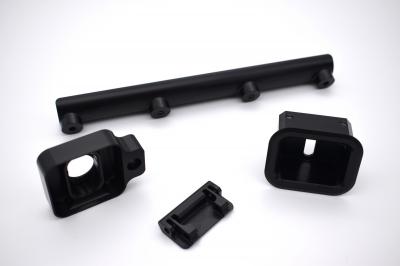
Usually, a reported quality problem is actually a symptom of something else.
In this blog, I’ll look at why this poor-quality symptom occurs and what you can do to ensure it doesn’t happen to you in the future.
Does your drawing match what you actually want?
This is most often the central reason why the problem has arisen. A drawing may not have enough detail to machine a part to the standard you require. For example, it may only show general tolerances rather than specific tolerances on key features, an incomplete finishing specification or no material grade stipulated.
When this happens, the issue isn’t actually poor quality, but poor communication.
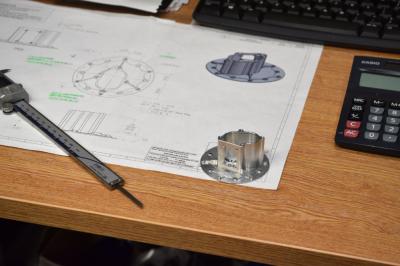
No machining company should ever receive a drawing with insufficient detail and proceed to machine the part without speaking to you. When they fail to do this, there is a high chance of making assumptions that are wrong and therefore the part is highly likely to be unfit for purpose.
Not only may you have a component with compromised functionality, this is also likely to result in unforeseen costs and delays to your project.
A good machining provider won’t make assumptions. They will speak to you before beginning manufacturing. The best time is at quote stage. If there is any potential for misunderstanding or data missing on a drawing, they should certainly be in touch to discuss.
Why might the drawing be incomplete?
There are several reasons why a drawing might be incomplete – some intentional and others unintended.
The main unintended reason I encounter is a design team have little knowledge about machining. They’re fantastic product designers but when it comes to getting that product into prototyping and production, they aren’t machining experts so their drawings might be missing detail a machinist might expect. The great news here is that your designers don’t need to be machining experts – that’s what your CNC machining supplier is for. They should be there to guide you through the process.
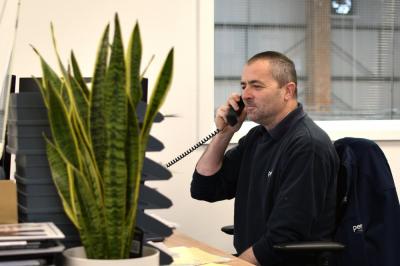
Where missing information is intended, it’s usually because a customer wants to discuss the detail with a supplier, and not prejudice the answer by providing initial information. When a supplier doesn’t contact you in this case, it can be very disappointing.
What’s the solution?
If you’re experiencing quality issues with your CNC machined part supplier, it may be worth first looking at your drawings and investigating whether they are as detailed as they should be.
Then consider whether there are any particular quality issues that you can match back to gaps in your drawings and specification.
If you’re not sure what you should include on your drawings, we’ve put together a checklist that we provide to our customers to help them through the process.
Your checklist
• Check general tolerances on your drawing border – are these correct for all features, or are some tied up and should be adjusted?
• Check the machined surface finish required – do any faces need to be a better machined surface finish? Can any be relaxed?
• Check material specification or grade and condition has been included.
• Include any other notes that might explain inspection requirements such as FAIRs, certificate of conformity, etc.
• Provide drawings as pdf and stp files.
• Ensure that the part number is included, and indicate whether it is a particular revision.
Download the full checklist here
This checklist is a great starting point, but it isn’t exhaustive. An exhaustive list is nearly impossible to produce because there are so many variables in any given project.
Remember, adding in unnecessary tight tolerances will add cost to your components. For more information, see our guide to cutting costs on your machined components.
Beyond this checklist, the best thing to do if you need support with your drawings is to talk to a CNC machining company. I’d always recommend seeking a company who has experienced machinists as part of their estimating team. They will know if a drawing has any missing information and will be able to advise on improvements.
Your CNC machining company should be there to serve you and I really do recommend a collaborative-style working relationship. Involving an experienced machinist in the design process will ensure optimal outcomes.
Ultimately, it’s all down to communication
Communication is something that I’m passionate about when it comes to delivering exceptional customer service as a CNC machining company.
There should be three main opportunities for communicating with you during the buying process:
1. At quoting stage
You should expect a machining company to get in touch with questions or to talk through any gaps or missing information after you’ve sent your drawing. Having this discussion at this point means that they should be able to supply you with an accurate quote and you won’t be asked for additional budget further down the line.
It also means that everything is cleared up before the order is awarded which puts you in a much stronger position, with smaller chance of nasty surprises.
My top tip is to ensure that when you compare quotes from different companies, that you’re comparing like for like. Imagine one company calls you after you’ve submitted your drawing and clarifies lots of points and really understands your specification. And then another takes your drawing that has incomplete information and just sends a price straight back. You’ll probably find the first quote is higher than the latter because it’s based on accurate information, not assumptions.
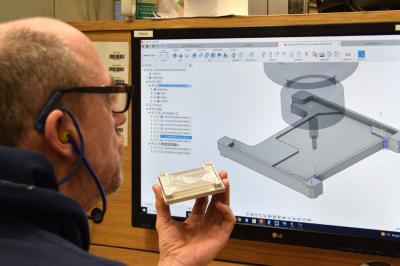
Something else I recommend is to agree concessions at the outset or discuss what can’t be achieved and why. Where this is the case, the company should be able to offer machining design advice on how to adjust your drawings to machine the component.
2. During the process
If things have been clarified at quote stage, there generally shouldn’t be too much need to ask questions during the machining process. Regardless, you should expect to receive a notification of when your component will arrive.
3. If anything arises
Unexpected issues can arise during machining, albeit rarely. You want to partner with a supplier who will communicate with you as soon as possible, telling you: what the situation is, what information they need from you, how they’re going to fix it, and any impact this may have on delivery dates. Giving you as much notice as possible is not only a courtesy but will allow you to rearrange resources if needed.
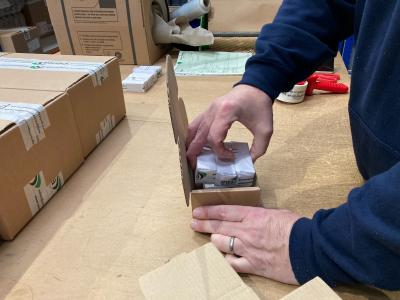
In summary
Poor quality is more often a result of poor communication than it is a reflection of a CNC machining company’s engineering expertise. If a company replies straight back with a quote without contacting you or digging into your specification, there’s a good chance you’ll be disappointed with the final machined part. They might provide a cheaper upfront quote but the costs to sort it out in the long run could be too much to bear. It’s worth taking the time to find a CNC machining partner who will communicate with you, offer machining design advice and collaborate with you to ensure that your design is optimal for machining.
Where next?
Choose Penta Precision for exceptional communication with your CNC machining needs.
Here at Penta, we are very proud of our unique “3 Cs”. We have rigorous processes to ensure that Communication, Care, and Consistency occur at every stage of our customers’ experience with us. Find out more about Penta’s Proven Process.
"I would highly recommend Penta Precision, not only is the product quality consistently outstanding and the pricing competitive, but also the service is excellent. Whether is it design support, quick pricing, or a deadline to meet, Penta’s team jump in and fulfil our business needs."
Agnieszka - Assistant Buyer at an Electronics OEM
We are also passionate about offering machining design advice as part of our service, as standard. All our estimators are time-served machinists and can guide you through creating a suitable design for machining.
Experience exceptional communication and expert machining design advice with Penta Precision. Reach out to our team today by calling 023 9266 8334 or emailing for an exemplary CNC machining experience.
